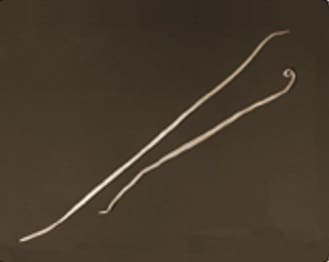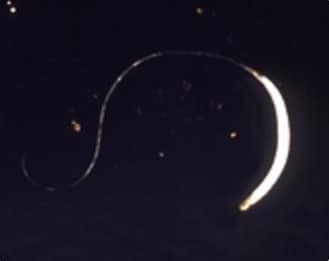Parasites - Soil-transmitted Helminths (STHs)
Soil-transmitted helminths refer to the intestinal worms infecting humans that are transmitted through contaminated soil (“helminth” means parasitic worm): Ascaris lumbricoides (sometimes called just “Ascaris“), whipworm (Trichuris trichiura), and hookworm (Ancylostoma duodenale and Necator americanus). A large part of the world’s population is infected with one or more of these soil-transmitted helminths:
- approximately 807-1,121 million with Ascaris
- approximately 604-795 million with whipworm
- approximately 576-740 million with hookworm
Soil-transmitted helminth infection is found mainly in areas with warm and moist climates where sanitation and hygiene are poor, including in temperate zones during warmer months. These STHs are considered neglected tropical diseases (NTDs) because they inflict tremendous disability and suffering yet can be controlled or eliminated.
Soil-transmitted helminths live in the intestine and their eggs are passed in the feces of infected persons. If an infected person defecates outside (near bushes, in a garden, or field) or if the feces of an infected person are used as fertilizer, eggs are deposited on soil. Ascaris and hookworm eggs become infective as they mature in soil. People are infected with Ascaris and whipworm when eggs are ingested. This can happen when hands or fingers that have contaminated dirt on them are put in the mouth or by consuming vegetables and fruits that have not been carefully cooked, washed or peeled. Hookworm eggs are not infective. They hatch in soil, releasing larvae (immature worms) that mature into a form that can penetrate the skin of humans. Hookworm infection is transmitted primarily by walking barefoot on contaminated soil. One kind of hookworm (Ancylostoma duodenale) can also be transmitted through the ingestion of larvae.
People with light soil-transmitted helminth infections usually have no symptoms. Heavy infections can cause a range of health problems, including abdominal pain, diarrhea, blood and protein loss, rectal prolapse, and physical and cognitive growth retardation. Soil-transmitted helminth infections are treatable with medication prescribed by your health care provider.

An estimated 576-740 million people in the world are infected with hookworm. Hookworm was widespread in the southeastern United States until the early 20th century but is now nearly eliminated. Hookworm, Ascaris, and whipworm are known as soil-transmitted helminths (parasitic worms). Together, they account for a major burden of disease worldwide.

An estimated 807-1,221 million people in the world are infected with Ascaris lumbricoides (sometimes called just “Ascaris”). Ascaris, hookworm, and whipworm are known as soil-transmitted helminths (parasitic worms). Together, they account for a major burden of disease worldwide. Ascariasis is now uncommon in the United States.
